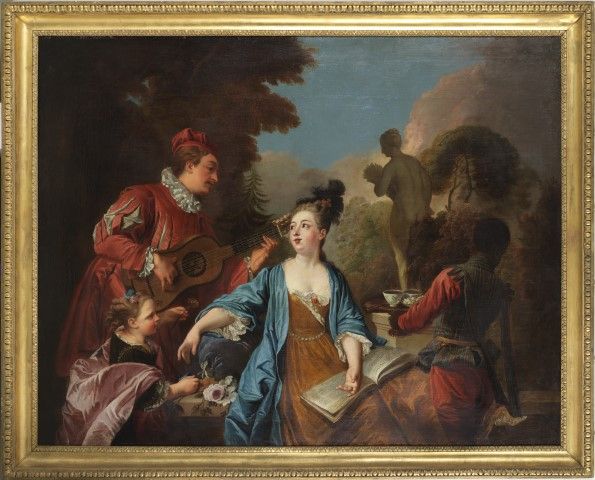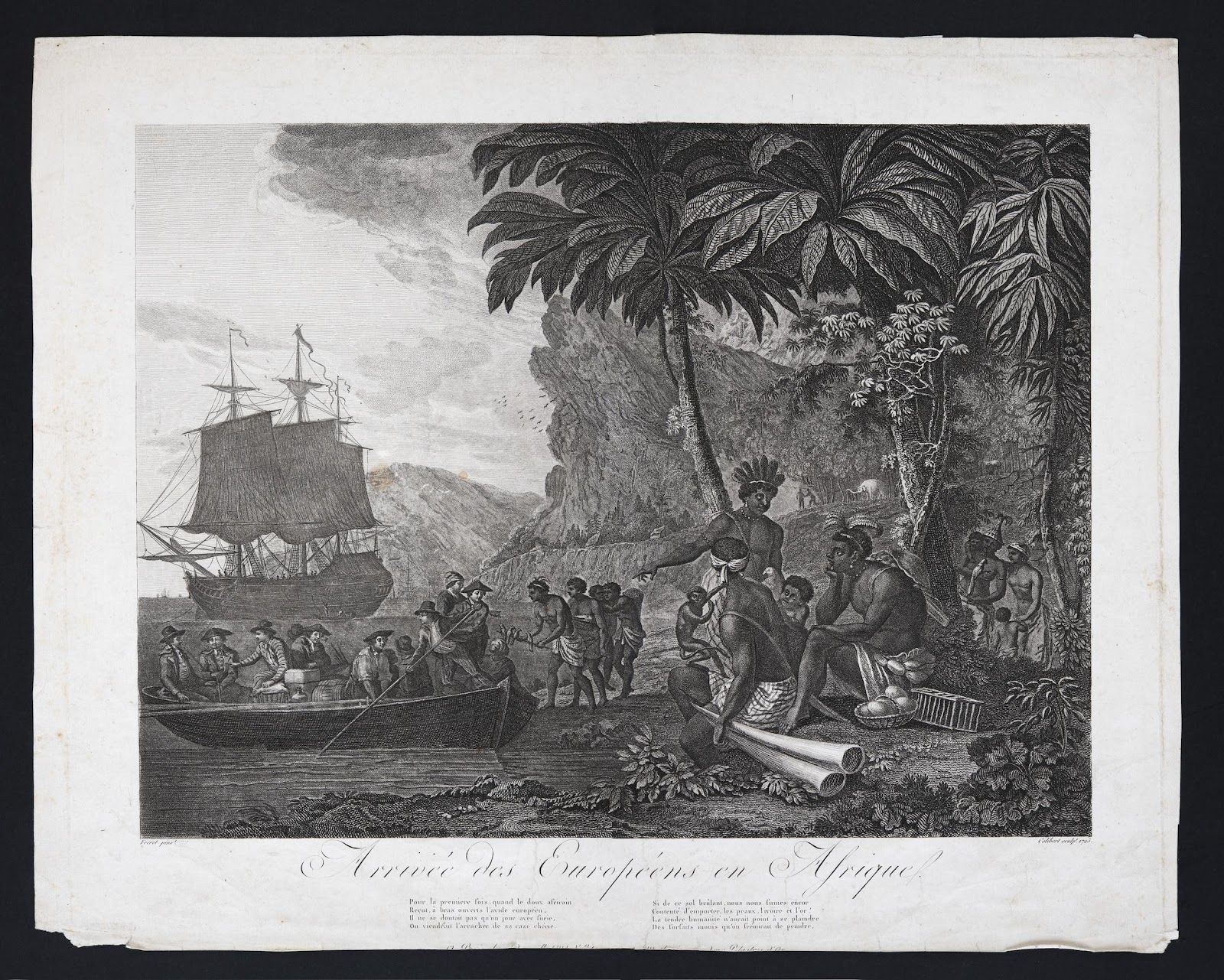
The highlighting of colonial items in this picture, such as the two cups of hot chocolate with sugar, is an expression of the refinement of privileged consumers. The Afro-descendant child presenting the cups is isolated to the right of the picture; he is clearly excluded from the conversation related to his “mistresses’” music. The relationship of domination towards the enslaved servant is all the more evident as his back is turned to us: with his face unseen, he no longer has an identity.
Attributed to RAOUX, Jean (1677-1734)
Tea in the Park
Paris, early 18th century
Oil on canvas Rouen,
Musée des Beaux-Arts de Rouen - RMM, inv. 1950.9.1

This etching is part of a series produced to mark the first anniversary of the first abolition of slavery on February 4, 1794. It aimed to raise public awareness of the horrors of slavery and the slave trade. The Africans are waiting peacefully for the Europeans, who arrive in large numbers on a boat loaded with bundles of trinkets and barrels of alcohol.
Nicolas Colibert (1750 - 1806), after Louis-Barthélémy Fréret (1754 - 1831)
Arrival of Europeans in Africa
1795 Etching,
41 x 57 cm
Bordeaux, Musée d’Aquitaine, Gift of Chatillon, Accession No. 2003.4.298

Weapons and ammunition were among the items exchanged for captives. It is estimated that Europeans sold up to 300,000 guns a year on the African continent during the second half of the 18th century. This helped maintain an endemic state of war, the prisoners of which fed the markets for human beings sold into slavery.
Trade gun
London, Barnett, 18th century
Wood and metal, length 170 cm
Bordeaux, Musée d’Aquitaine, Accession No. 95.36.433
.jpg)
Le Code Noir ou Recueil de réglemens rendus jusqu'à présent, concernant le Gouvernement, l'Administration de la Justice, la Police, la Discipline & le Commerce des Nègres dans les Colonies Françoises
Printed book, 12 X 8 cm (closed),
Archives départementales du Calvados
©AD14
.jpg)
The strong added value of Indian and Asian products - sold exclusively in Nantes between 1720 and 1733 - led to an unprecedented increase in wealth for the city. At that time, textiles from India and cowries (shells) collected in the Maldives had reached proportions never equalled. But these products represented the lion’s share of goods exchanged in Africa for captives, therefore, in Nantes, shipowners were particularly favored by the convergence of trade routes.
Notice : © Château des ducs de Bretagne – Musée d’histoire de Nantes
PETITPIERRE ET COMPAGNIE (1791-1803)
Indian printed canva (“floral indienne”) made for the western market
18th century
Woodblock printing on cotton, 83 x 124 x 208 cm
Château des Ducs de Bretagne -Musée d’Histoire de Nantes, INV 2004.20.1
Purchase
Crédit photo : ©Antoine Violleau / Château des ducs de Bretagne - Musée d'histoire de Nantes